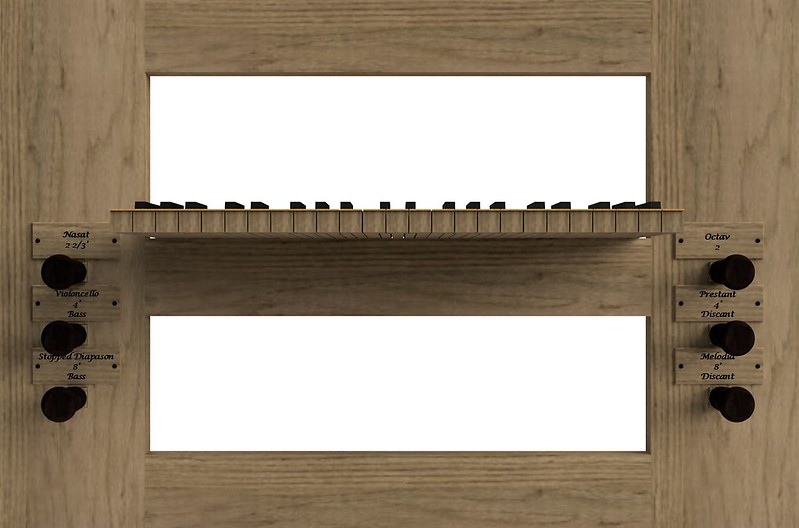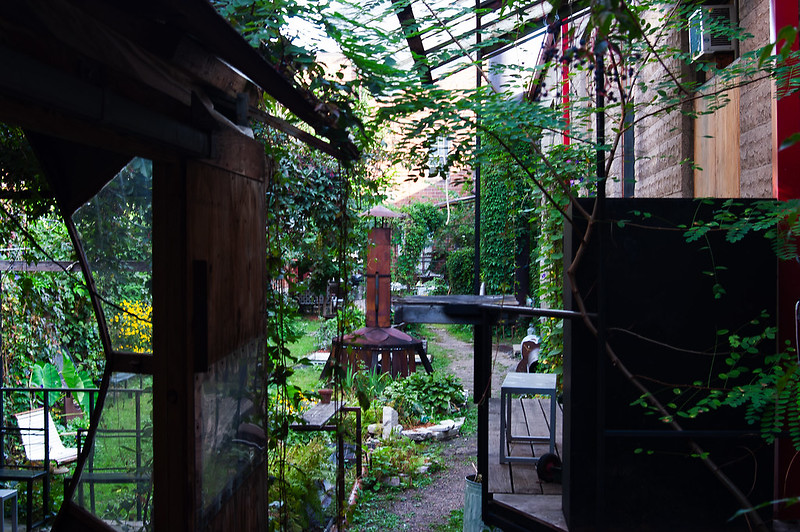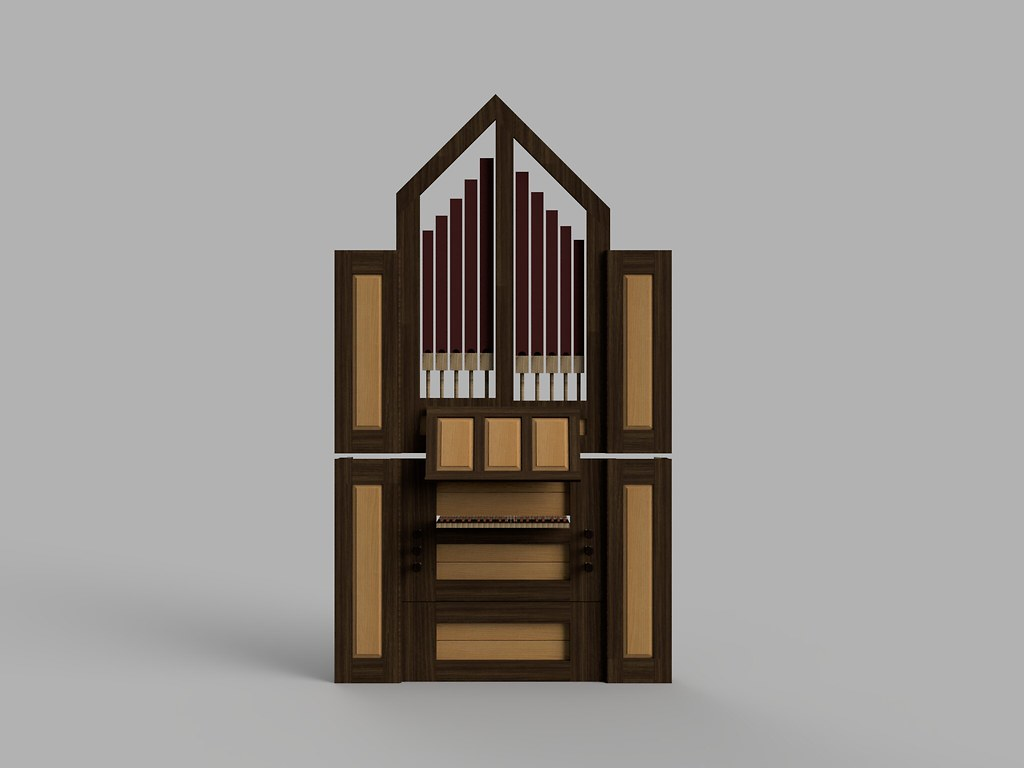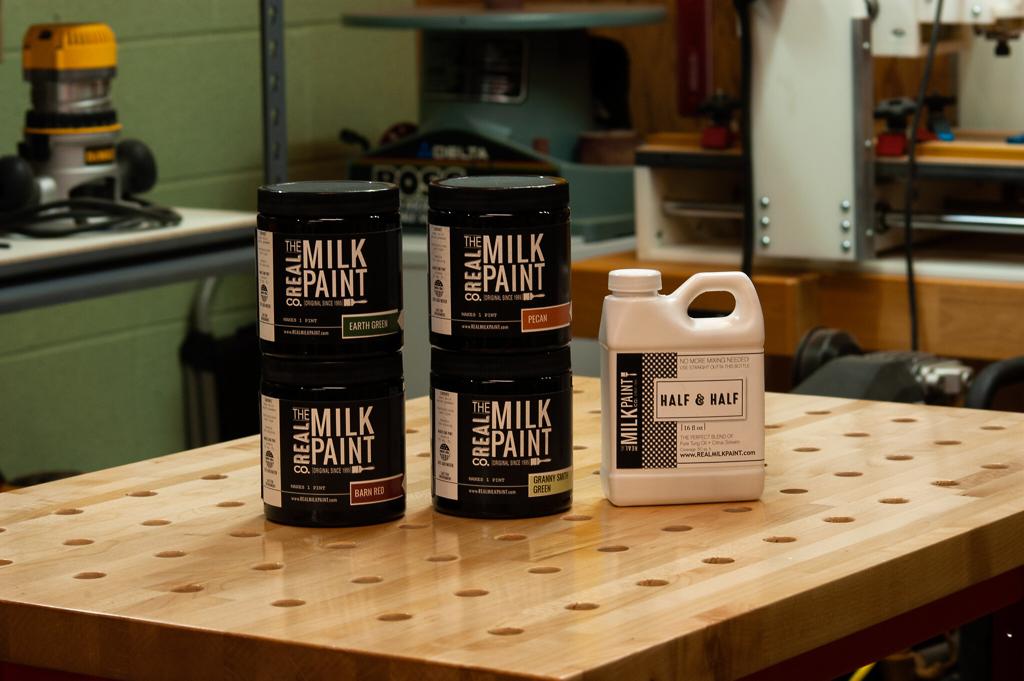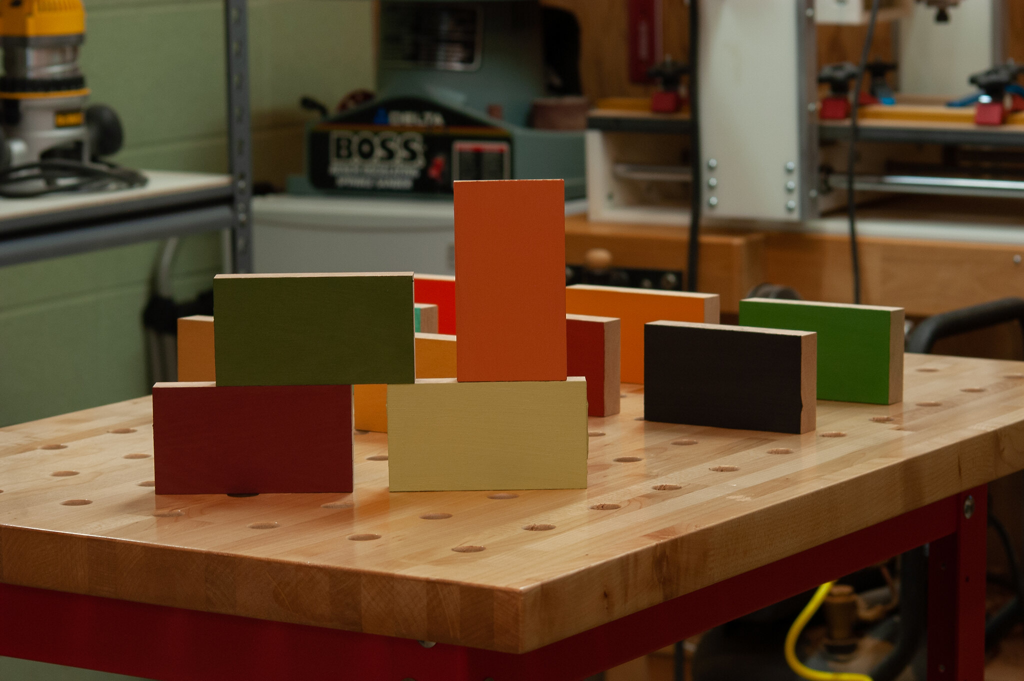The Idea that It's Something Different
![]() October 12, 2025 07:34
October 12, 2025 07:34
This is the twelfth post in a series of blog posts where I conduct a design study that conceptually builds a very real church, an organ they didn't ask for, using pipes taken from their existing mid-industrial era gallery organ. This design study provides me with the opportunity to develop, if only on paper, an example of my 43-note continuo for a space I am familiar with, using material I am familiar with. I was an organist there for eight years.
If you are new to my project, start here and work your way up.
My 43-note continuo concept is at odds with some of the organ community at large. But the 43-note may be more its own instrument than I've realized until recently. Let me explain. I remember playing Mass in a small chapel when I was in college. The chapel contained a parlor organ. Outside of someone's living room, that may have been my first occasion playing a reed organ, and I did not like it. Nothing about it was familiar, no matter how much I tried to translate my experience with the pipe organ to it.
And that's where the problem was. I neither understood nor treated the reed organ as its own instrument. If I had known then what I know now, I could have made it a better experience in interpreting music on a period instrument. Organists often tell me and another colleague that my instruments need a second keyboard. And they'd really like an independent pedal with its own 16' stop. Like I did with the chapel reed organ, they miss the point.
A pianist can sit down and play my 43-note continuo with ease once they understand some simple rules of registration and get the feel for playing a sustained tone instrument. With anywhere from four to six sets of pipes, an experienced organist will immediately understand the stop list. What I'd like to see are those who understand it as its own instrument, like seeing Eddie Vedder perform "River Cross" on a pump organ during the pandemic lockdown as part of the One World: Together At Home livestream event. I want to see how others use the cost-sustainable space-efficient 43-note to interpret music and build community. Not everyone shares the same vision, though.
My 43-note continuo is not a conventional organ built along traditional lines and should not be thought of as one. I build upon tradition, but a tradition that must evolve to remain relevant.
Posted October 12, 2025 07:34
Add Your Comment
Reuse and Recycle: The Story of a 43-Note Build
by Steve Panizza
Recent Blog Entries
Archive
